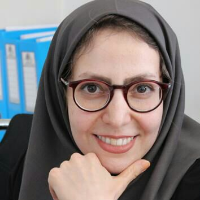Developing the Process of Creating Readable Urban Space and its Affecting Factors based on the Understanding and Analysis of Translation Theories; a Meta-Theoretical Approach
The creation of understandable and readable urban space is very important. In fact, humans interact with the environment when the received message from the environment is recognized in their Semiosphere. This indicates that paying attention to cultural meanings of environmental design is essential. Accordingly, this research aims to develop the production process of such a space, based on the linguistic paradigm. Despite the importance of this issue, there has been a decline of meaning in the modern era. Therefore, theorists criticize the modernist approach and try to find different solutions to this problem. Thus, in the transition from modern theory to postmodern theories, a wide range of theoretical paradigms have been recognized that are classified in the categories of phenomenology, linguistic theory (including semiotics, structuralism, post-structuralism, deconstructionism), Marxism, and feminism. Among these paradigms, linguistics has been developed in relation to the category of meaning. In fact, the revival of thought in the form of linguistic paradigms changed the postmodern cultural criticism. Meanwhile, semiotics, structuralism, and post-structuralism have been effective in the re-development of many disciplines, especially critical actions. These paradigms have once again focused simultaneously on meaning and symbolism in architecture and urban planning. This paper aims to develop the step-by-step process of designing readable urban spaces and identify the factors influencing the creation of such spaces based on linguistic theory. This paradigm was selected due to its ability to solve the problems caused by the perdition of meaning in the field of architecture and urban planning. In this paper, translation studies have been used as a knowledge related to the selected paradigm. In fact, this paper aims to achieve the ultimate goal of the research by using, scrutinizing and understanding the theories proposed in translation studies. The present study is an analytical study according to its purpose. This study uses the meta-theoretical approach as a type of Meta-Study approach. Therefore, historical and comparative methods are used in scrutinizing the theories proposed in translation studies. Having carefully examined the theories proposed in the field of translation studies, the authors have described the process of creating readable spaces according to the research purpose and problem. Meanwhile, the inefficiency of the traditional translation theories has been studied in creation of readable urban spaces. Eventually, the reasons for using modern translation theory and the application of this process have been explained using logical reasoning. The results of the meta-theoretical analysis show that the modern theory of translation and the cultural translation approach that leads to communicative translation is a desirable approach in producing a cultural text in the city. Finally, the process of creating readable urban spaces have been developed by adapting the modern theory of translation to the process of designing meaningful urban spaces. Accordingly, the urban designers should identify the metalinguistic realm of space and the city, and analyze the source of the language. Having applied the filter of culture and the discourses of power and ideology, the designers should identify the hidden and understandable signs and meanings of space and translate them in a process-oriented way. In other words, the cultural translation model is used as an optimal model for creating readable urban spaces. Thus, that the signs in the source text (from Lotman's point of view) represent the cultural identities. This means that the cultural text is produced in the semiosphere. In fact, semiosphere is a center in which texts are produced, and out of which chaos and disorder threaten the inside of the semiosphere. This issue is also important in the target text; meaning that the consideration of signs in the source text in the translation process should pass the filter of culture in the target text for producing a cultural text. Accordingly, in this process, the urban designer should use the signs in the semiosphere to provoke the continuity of meaning and create a cultural text. Otherwise, the produced text will have non-cultural and non-encrypted meanings for the users. There are semiospheres of other cultures within the semiosphere of any culture that interact and communicate with each other. This means that in the process of intercultural communication, some of the signs and meanings outside of the culture may be accepted.
- حق عضویت دریافتی صرف حمایت از نشریات عضو و نگهداری، تکمیل و توسعه مگیران میشود.
- پرداخت حق اشتراک و دانلود مقالات اجازه بازنشر آن در سایر رسانههای چاپی و دیجیتال را به کاربر نمیدهد.


